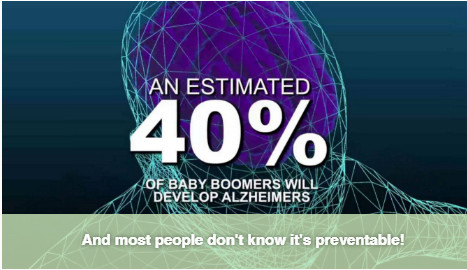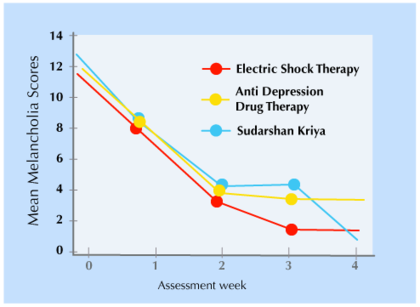Research
Research on Sudarshan Kriya
Discover the power of Art of Living's evidence-based practices
Over 100 independent studies conducted on four continents and published in peer-reviewed journals, have demonstrated a comprehensive range of benefits from practicing Sudarshan Kriya taught on The Art of Living programmes
Research Result Highlights



Research Slides
Sudarshan Kriya
Physical and Mental Health Benefits
Sudarshan Kriya and accompanying breathing practices, referred to collectively as SK and taught through the Art of Living Foundation worldwide, have been found to enhance brain, hormone, immune and cardiovascular system function. Published research shows that SK significantly reduces stress, depression, anxiety and Post-Traumatic Stress Disorder (PTSD), and significantly increases well-being both mentally and physically. Research also demonstrates that the effects of SK reach all the way down to the molecular level, to our DNA.
Over 100 independent studies conducted on four continents and published in peer reviewed journals, have demonstrated a comprehensive range of benefits from SK practice.
Significant Health Benefits Documented in Independent Research and published in Peer Reviewed Journals
Mental Well-Being:
Restoration and Enhancement of Vibrant Mental Health:
- Relieves anxiety [1-10] and depression [2, 4, 8-19], PTSD symptomsS[3, 15, 16, 20] and stress levels [4, 6, 17, 18, 21-23]
- Significant reductions in anxiety are found in many populations, including a 73% response rate and 41% remission rate in individuals for whom medication and psychotherapy treatments had failed [1].
- Multiple studies demonstrate that depressed patients who learned SK experienced a 68-73% remission rate within one month.
- Significant reductions in PTSD symptoms were found in 4-6 weeks and were sustained at 6 months[15] and one year, with no follow-up after 1 month [3, 15].
- Reduces impulsivity and addictive behaviors [24, 25]
- Improved emotional regulation [1, 17, 18, 26-28]
- Increased levels of self-esteem, optimism, joviality (e.g. joy, happiness, energy), serenity, life satisfaction and quality of life [4, 5, 15, 18, 28-30]
Enhanced Brain Functioning:[13, 14, 22, 31]
- Increased mental focus / heightened awareness [31]
- Faster recovery from stressful stimuli [22]
Improved Quality of Sleep:[32]
- Restoration of time spend in deep restful stages (stages III and IV) of sleep.
Physical Well-Being:
Enhanced Biochemical Status:
- Reduced biochemical markers of stress: cortisol [2, 33, 34], corticotrophin [2] blood lactate [35], ACTH [2], and plasma malondialdehyde (MDA) [2, 36, 37]
- For example, blood lactate levels in police cadets who did not learn SK were 4 times higher than their classmates who were randomized to learn SK, suggesting a greatly increased resilience to stress in SK practitioners.
- Since stressful physiological responses negatively impact immune, cardiovascular and endocrine systems, as well as mental health, this has significant implications for wellness [16].
- Increased biomarkers of well-being [38]
- Significant increases (33%) in the well-being hormone prolactin levels in depressed patients with low prolactin levels from the very first session.
- Increased levels of antioxidant enzymes (glutathione, catalase, and superoxide dismutase) [6, 35, 39]
- Antioxidants protect us from many diseases and rapid aging.
Enhanced Immune Function:
- Improved immune cell counts in apparently healthy individuals [21, 25]
- Some documented within three weeks (neutrophils, lymphocytes, platelet count) [21]
- Improved immune cell counts in health compromised individuals seen in 12 weeks (Natural Killer Cells) [25]
- Rapid changes to gene (the building blocks of DNA) expression [39-41]
- SK induced changes in the expression of genes in white blood cells (our immune cells) within two hours of starting the practice. This was 4-fold more than simple exercise and relaxation used as the control condition in the same study participants[40] .
- Long-term effects of SK on expression of 11 genes related to oxidative stress, DNA damage, cell cycle control, and cell death suggests that the long-term benefits of SK may be mediated in part by regulation of gene expressions [39] .
Enhanced Cardiovascular and Respiratory Function:
- Reduced heart rate in both healthy and health compromised individuals [42-44][6]
- Reduced blood pressure
- In both healthy and health compromised individuals [6, 37, 42, 43]
- Improved cholesterol and triglyceride (lipid) profiles: [36][6, 21]
- Sometimes seen as early as 3 weeks, with no change in diet [36]
- Improved respiratory function: [3, 43-46]
- Respiration rate dropped by 5% in 1 week [3] and 15% in 12 weeks [45]
- Increased lung (vital/forced vital) capacity [43, 44, 46]
In Summary, Sudarshan Kriya uses specific cyclical, rhythmic patterns of breath to bring the mind and body into a relaxed, yet energized state. Its effects have been studied in open and randomized trials, both in healthy and health compromised populations.
Research suggests that SK reduces depression, anxiety, PTSD and stress.It has also been shown to curb addictive behaviors and substance abuse. It significantly increases feelings of well-being, optimism and mental focus and improves emotion regulation. In addition, SK is associated with enhanced cardio-respiratory function, antioxidant status and immune system function. The practice has even been shown to impact gene expression at short and long term periods, suggesting that the effects of SK span all levels of the physiology from the DNA within our cells to organ systems. Viewed together, the wide range of documented benefits suggest that SK may be an efficient tool for rapidly strengthening the mind-body complex.
References:
- Katzman, M.A., et al., A multicomponent yoga-based, breath intervention programme as an adjunctive treatment in patients suffering from Generalized Anxiety Disorder with or without comorbidities. International journal of yoga, 2012. 5(1): p. 57.
- Vedamurthachar, A., et al., Antidepressant efficacy and hormonal effects of Sudarshana Kriya (SK) in alcohol dependent individuals. Journal of affective disorders, 2006. 94(1): p. 249-253.
- Seppälä, E.M., et al., Breathing‐Based Meditation Decreases Posttraumatic Stress Disorder Symptoms in US Military Veterans: A Randomized Controlled Longitudinal Study. Journal of traumatic stress, 2014. 27(4): p. 397-405.
- Kjellgren, A., et al., Wellness through a comprehensive yogic breathing programme - a controlled pilot trial. BMC Complement Altern Med, 2007. 7: p. 43.
- Sureka, P., et al., Effect of Sudarshan Kriya on male prisoners with non psychotic psychiatric disorders: A randomized control trial. Asian journal of psychiatry, 2014. 12: p. 43-49.
- Agte, V.V. and S.A. Chiplonkar, Sudarshan kriya for Improving Antioxidant status and Reducing Anxiety in Adults. Alternative and Complementary Therapies, 2008. 14(2): p. 96-100.
- Narnolia, P.K., et al., Effect of Sudarshan Kriya Yoga on Cardiovascular Parameters and Comorbid Anxiety in Patients of Hypertension.
- Doria, S., et al., Anti-anxiety efficacy of Sudarshan Kriya in general anxiety disorder: a multicomponent, yoga based, breath intervention programme for patients suffering from generalized anxiety disorder with or without comorbidities. Journal of affective disorders, 2015. 184: p. 310-317.
- Toschi-Dias, E., et al., Sudarshan Kriya improves cardiac autonomic control in patients with anxiety-depression disorders. Journal of Affective Disorders, 2017. 214: p. 74-80.
- Sharma, A., et al., A breathing-based meditation intervention for patients with major depressive disorder following inadequate response to antidepressants: a randomized pilot study. The Journal of clinical psychiatry, 2017. 78(1): p. e59.
- Janakiramaiah, N., et al., Antidepressant efficacy of Sudarshan Kriya (SK) in melancholia: a randomized comparison with electroconvulsive therapy (ECT) and imipramine. Journal of affective disorders, 2000. 57(1): p. 255-259.
- Janakiramaiah, N., Gangadhar, B.N., Naga Venkatesha Murthy,, S. P.J., T.K., Subbakrishna, D.K., Meti, B.L., Raju, T.R.,, and A. Vedamurthachar, Therapeutic efficacy of Sudarshan Kriya (SK) in dysthymic disorder. NIMHANS J., 1998. 17: p. 21-28.
- Naga Venkatesha Murthy, P., et al., Normalization of P300 amplitude following treatment in dysthymia. Biological Psychiatry, 1997. 42(8): p. 740-743.
- Murthy, P.N.V., et al., P300 amplitude and antidepressant response to Sudarshan Kriya (SK). Journal of affective disorders, 1998. 50(1): p. 45-48.
- Descilo, T., et al., Effects of a yoga breath intervention alone and in combination with an exposure therapy for post-traumatic stress disorder and depression in survivors of the 2004 South-East Asia tsunami. Acta Psychiatr Scand, 2010. 121(4): p. 289-300.
- Martin, A., Multi-component yoga breath programme for Vietnam veteran post traumatic stress disorder: randomized controlled trial. Journal of Traumatic Stress Disorders and Treatment, 2013.
- Kharya, C., et al., Effect of controlled breathing exercises on the psychological status and the cardiac autonomic tone: Sudarshan Kriya and Prana-Yoga. Indian Journal of Physiology and Pharmacology, 2014. 58(3): p. 210-220.
- Goldstein, M.R., et al., Improvements in well-being and vagal tone following a yogic breathing-based life skills workshop in young adults: Two open-trial pilot studies. International journal of yoga, 2016. 9(1): p. 20.
- Carter, J., et al., Multi-component yoga breath programme for Vietnam veteran post traumatic stress disorder: randomized controlled trial. J Trauma Stress Disor Treat 2, 2013. 3: p. 2.
- Walker III, J. and D. Pacik, Controlled Rhythmic Yogic Breathing as Complementary Treatment for Post-Traumatic Stress Disorder in Military Veterans: A Case Series. Medical acupuncture, 2017. 29(4): p. 232-238.
- Subramanian, S., et al., Role of sudarshan kriya and pranayam on lipid profile and blood cell parameters during exam stress: A randomized controlled trial. International journal of yoga, 2012. 5(1): p. 21.
- Chandra, S., et al., Mental stress: neurophysiology and its regulation by Sudarshan Kriya . International journal of yoga, 2017. 10(2): p. 67.
- Kharya, C., et al., Effect of controlled breathing exercises on the psychological status and the cardiac autonomic tone: Sudarshan Kriya and Prana-Yoga. Indian J Physiol Pharmacol, 2014. 58(3): p. 210-220.
- Ghahremani, D.G., et al., Effects of the Youth Empowerment Seminar on impulsive behavior in adolescents. Journal of Adolescent Health, 2013.
- Kochupillai, V., et al., Effect of rhythmic breathing (Sudarshan Kriya and Pranayam) on immune functions and tobacco addiction. Annals of the New York Academy of Sciences, 2005. 1056(1): p. 242-252.
- Gootjes, L., I.H. Franken, and J.W. Van Strien, Cognitive Emotion Regulation in Yogic Meditative Practitioners. Journal of Psychophysiology, 2011. 25(2): p. 87-94.
- Katzman, M.A., et al., A multicomponent yoga-based, breath intervention programme as an adjunctive treatment in patients suffering from generalized anxiety disorder with or without comorbidities. Int J Yoga, 2012. 5(1): p. 57-65.
- Newman, R., O. Yim, and D. Shaenfeld, Gender and Ethnicity: Are they associated with Diffrential Outcomes in a comprehensive Social-Emotional-Learning Programme? under review.
- Jyotsna, V.P., et al., Comprehensive yogic breathing programme improves quality of life in patients with diabetes. Indian journal of endocrinology and metabolism, 2012. 16(3): p. 423.
- Warner, A. and K. Hall, Psychological and Spiritual Well-being of Women with Breast Cancer Participating in the Art of Living Programme, in Psychology of Cancer, N.L. Hicks and R.E. Warren, Editors. 2012, Nova Science Publishers, Inc.
- Bhatia, M., et al., Electrophysiologic evaluation of Sudarshan Kriya: an EEG, BAER, P300 study. Indian journal of physiology and pharmacology, 2003. 47(2): p. 157-163.
- Sulekha, S., et al., Evaluation of sleep architecture in practitioners of Sudarshan Kriya and Vipassana meditation*. Sleep and Biological Rhythms, 2006. 4(3): p. 207-214.
- Kumar, N., et al., Randomized controlled trial in advance stage breast cancer patients for the effectiveness on stress marker and pain through Sudarshan Kriya and Pranayam. Indian journal of palliative care, 2013. 19(3): p. 180.
- Mulla, Z.R. and Vedamuthachar, Impact of a Sudarshan Kriya-based occupational stress management intervention on physiological and psychological outcomes. Management and Labour Studies, 2014. 39(4): p. 381-395.
- Sharma, H., et al., Sudarshan Kriya practitioners exhibit better antioxidant status and lower blood lactate levels. Biological Psychology, 2003. 63(3): p. 281-291.
- Agte, V.V. and K. Tarwadi, Sudarshan kriya for treating type 2 diabetes: a preliminary study. Alternative and Complementary Therapies, 2004. 10(4): p. 220-222.
- Agte, V.V., M.U. Jahagirdar, and K.V. Tarwadi, The effects of Sudarshan Kriya on some physiological and biochemical parameters in mild hypertensive patients. Indian J Physiol Pharmacol, 2011. 55(2): p. 183-187.
- Janakiramaiah, N., et al., Therapeutic efficacy of Sudarshan Kriya (SK) in dysthymic disorder. Nimhans Journal, 1998. 16(1): p. 21-28.
- Sharma, H., et al., Gene expression profiling in practitioners of Sudarshan Kriya. Journal of psychosomatic research, 2008. 64(2): p. 213-218.
- Qu, S., et al., Rapid gene expression changes in peripheral blood lymphocytes upon practice of a comprehensive yoga programme. PLoS One, 2013. 8(4): p. e61910.
- Ayyildiz, D. and K.Y. Arga, Hypothesis: Are there molecular signatures of yoga practice in peripheral blood mononuclear cells? Omics: a journal of integrative biology, 2017. 21(7): p. 426-428.
- Somwanshi S. D., H.S.M., Adgaonkar B. D., Kolpe D. V., Effect of Sudarshan kriya on Cardiorespiratory Parameters. International Journal of Recent Trends in Science And Technology, 2013. 8(1).
- Kale, J.S., R.R. Deshpande, and N.T. Katole, The effect of Sudarshan Kriya (SK) on cardiovascular and respiratory parameters. Int J Med Sci Public Health, 2016. 5(10): p. 2091-4.
- Bodi, S.G., et al., Improvement in lung function with a unique breathing technique: Sudarshan kriya (SK). Chest, 2008. 134(4): p. 144P.
- Somwanshi, S., et al., Effect of Sudarshankriya on Cardiorespiratory Parameters. Int J Recent Trends in Science and Technology, 2013. 8(1): p. 62-66.
- Chavhan, D.B., The Effect Of Sudarshan Kriya and Bhastrika Pranayama on Endurance Capacity in Kho-Kho Players International Multidisciplinary Research Journal, 2103. 6(1).
Free Breath and Meditation Session
Featured Articles

Yoga for Anxiety and Depression
A Harvard University health publication describes research on the Sudarshan Kriya's effects on anxiety, stress, depression and over health, saying it "shows promise in providing relief for depression".
Describes Sudarshan Kriya’s effects on anxiety, stress, depression, and overall health, saying it "shows promise in providing relief for depression".

The Easy Breathing Technique That Can Lower Your Anxiety 44%
In the study cited by Prevention Magazine not only did people's anxiety reduce 44% but it lasted for 6 months.
Plus, "depression, phobias, and hostility, among others—also fell by 45%. And many people reported better sleep, improved self-awareness, and even fewer PMS symptoms."
This Short Animated Video Reveals Research on:
- Why you can't force the mind to relax
- How stress affects the brain
- The deep connection between our breathing and emotions
- Benefits of Sudarshan Kriya on stress, focus, depression, and more

The Truth About Memory Loss
The Art of Living breathing exercises were featured in a documentary on brain health called “The Truth About Memory Loss: Reducing, Repairing, and Reversing the signs of Alzheimer’s and Dementia”.
The film reveals some breakthrough science on a health epidemic expected to affect 40% of all baby boomers (40M Americans), including how Art of Living breathing exercises boost brain health and reduce 5 of the 6 major risk factors for Alzheimer’s and dementia.
What Our Participants Have to Say
Learn the Programme
Contact us for more information regarding our programmes at indranil.basu@artofliving.ch








